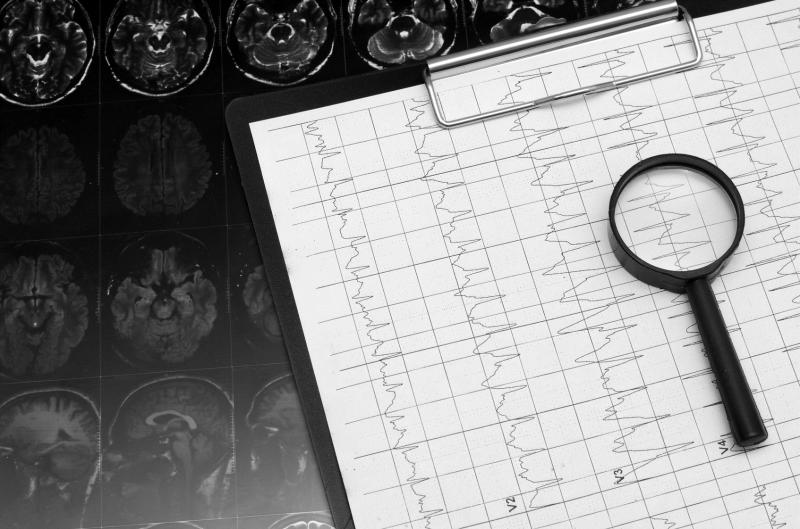
Measuring heart rate variability (HRV) using a wearable echocardiography (ECG) device shows promise in detecting seizures, including the nonconvulsive episodes, proving to have high sensitivity and low false alarm rate during the night, according to data from a phase II validation study.
“When prominent motor phenomena are not part of seizure semiology, autonomic nervous system changes could provide the input for automated seizure detection using wearable devices… HRV is a recognized method of estimating the parasympathetic and sympathetic tonus of the autonomic nervous system,” the investigators explained.
“In previous phase I studies, we achieved promising results for detection of focal impaired awareness seizures using HRV,” they added [Conf Proc IEEE Eng Med Biol Soc 2014;2014:4563-4566; Seizure 2016;37:13-19]
In the current study, the investigators compared the performance of 26 automated algorithms for detecting the R‐peaks in ECG signals recorded with a wearable device. They used data on 126 seizures (108 nonconvulsive and 18 convulsive; median duration, 76 seconds) from 43 patients admitted to long‐term video–electroencephalography monitoring (LTM).
Experts reviewed the LTM recording and marked seizure time‐points. The total recording time in patients with seizures was 3,180 hours. Responders were defined as patients whose >66 percent of seizures were detected.
The HRV algorithm that performed the best combined a measure of sympathetic activity with a measure of how quickly heart rate changes occurred, identifying 53.5 percent of the patients with seizures as responders. Among responders, detection sensitivity was 93.1 percent for all seizures and 90.5 percent for nonconvulsive seizures. The median seizure detection latency was 30 seconds. [Epilepsia 2019;60:2105-2113]
“Most of the false alarms occurred during the day when the patients and/or caregivers would be able to cancel them. During sleep in the night, the rate … was considerably lower [at] 0.11 false alarms per night,” the investigators noted.
“We found that responders were those patients who had marked autonomic changes during seizures. An ictal change in HR of over 50 bpm (increase or decrease) predicted responders with a positive predictive value of 87 percent (95 percent confidence interval [CI], 69.9–95.4 percent) and a negative predictive value of 90 percent (95 percent CI, 70.4–97.2 percent),” they added.
The investigators stated that, to the best of their knowledge, the algorithm they presented in the study possesses the highest performance for detecting nonconvulsive seizures reported so far in phase II validation studies.
They believe that the algorithm can also be implemented in implantable cardiac monitors, so long as the findings are replicated in phase III studies, and in turn provide a highly feasible approach in selected patients with autonomic changes during seizures.